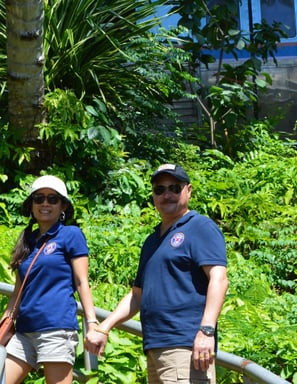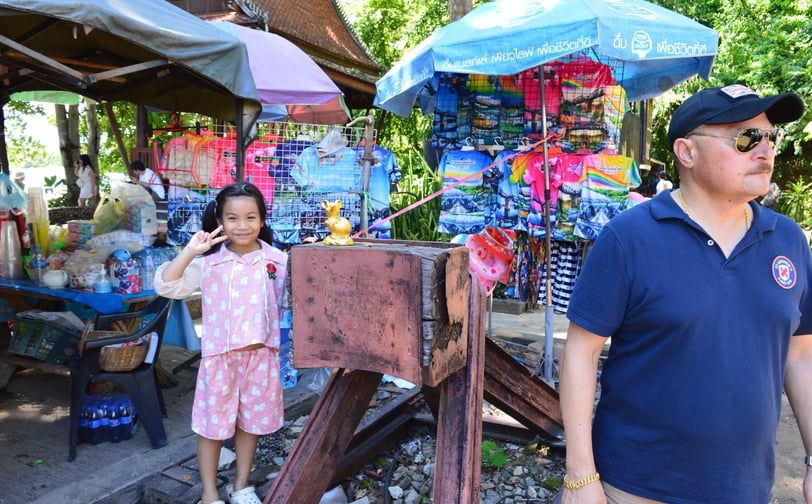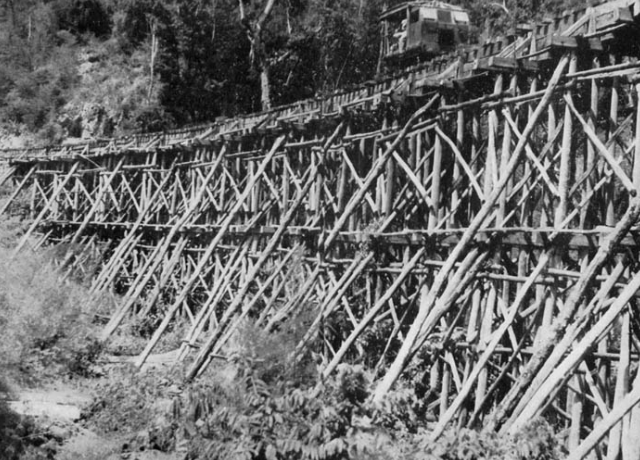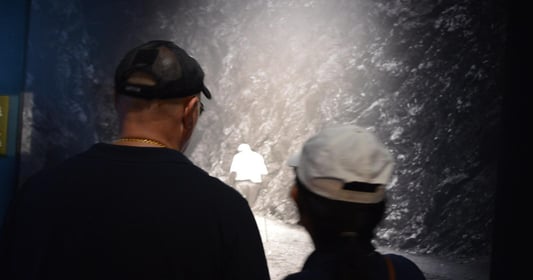
You didn’t come this far to stop
Discovering Nam Tok Sai – The End of the Line and a Hidden Gem
Episode 50: Discovering Nam Tok Sai – The End of the Line and a Hidden Gem
Welcome to Episode 50, where the St. Andrews research team explores Nam Tok Sai, a charming little spot at the true end of the Death Railway. This picturesque area, with its preserved steam engine, vibrant market, and delightful eateries, offers a serene and family-friendly atmosphere. Join us as we take you on a journey to this hidden gem.
IN THEIR FOOTSTEPS BLOGDUNLOP RESEARCH - TRIP 2INSIGHTS
Toursofwar.com
5/2/20244 min read
Arriving at
Nam Tok Sai
As we arrive at Nam Tok Sai, we walk up a set of stairs leading to the actual end of the railway. Here, you'll find a small market and a couple of restaurants, creating a quaint and welcoming environment. The preserved steam engine at the end of the railway gives a glimpse into the history of the trains that once traversed these tracks during the 1950s, post-World War II.




Exploring
Nam Tok Sai
Upon arrival at Nam Tok Sai, we walk up the stairs to the railway track, where the actual end of the railway is located. Here, we find a charming market and a couple of delightful restaurants. This area is bustling with activity, with children playing and families enjoying their time together. At the very end of the railway, there's a well-preserved steam engine from the 1950s, offering a glimpse into the type of trains that once traveled these tracks. This spot is not only beautiful but also a great place to relax, have some food, and soak in the serene atmosphere.


Construction and Significance:
The Burma Railway was constructed by the Japanese Imperial Army between 1942 and 1945 to connect Bangkok, Thailand, with Rangoon, Burma (now Yangon, Myanmar). This strategic supply route was built using forced labor, including prisoners of war from countries like Australia, Britain, and the United States, as well as local Thai and Southeast Asian laborers.


Conditions and Casualties
The construction of the railway was marked by extreme hardship and brutality. Prisoners of war faced harsh conditions, including malnutrition, disease, and physical abuse. Many prisoners died during the construction process, with estimates ranging from 12,621 to 90,000 deaths. The severity of the conditions led to the railway being known as the "Death Railway."
Memorials and Legacy: Today, the area around Nam Tok Sai Yok Noi is a popular tourist destination, with many memorials and historical sites dedicated to the prisoners of war and forced laborers who built the railway. The most notable of these is the Hellfire Pass Memorial Museum, which commemorates the prisoners who died during the construction of the railway. The museum hosts an annual memorial ceremony on April 25 to honor the victims.


The region also includes Sai Yok National Park, featuring the Sai Yok Noi Waterfall, a popular tourist attraction near the former railway site. Visitors can take a train ride along the railway line to experience the scenic views and historical significance of the area.
Nam Tok
Station
Location: Sai Yok District, Kanchanaburi Province, Thailand, along the route of the Death Railway.
Historical Significance: Known as Tarsoa or Tarsau during World War II, this site housed Japanese prisoner of war camps.
Population and Area: As of 2012, the town had a population of 3,675 and covered an area of 4.4 km².
How You Can Help
Donations and Sponsorships: We are seeking corporate sponsorships and donations to fund ongoing restoration projects and educational programs. Your support can make a significant difference in maintaining the quality and impact of the museum.
Volunteer Opportunities: If you have expertise or time to offer, consider volunteering with us. There are many ways to get involved, from artifact restoration to educational outreach.
Spreading the Word: Share this blog and our mission with your network. The more people who know about the JEATH War Museum and its significance, the greater the impact we can achieve together.
The St Andrews Research Team is dedicated to preserving the legacy of the Thai-Burma Railway and the memories of those who suffered. We need your support to continue our work. There are several ways you can help:
Join the Cause!
If you or someone you know is interested in supporting this cause, please get in touch.
This is a chance to be part of something truly meaningful and impactful.


Conclusion
Nam Tok Sai is not just the end of the line for the historic Death Railway; it's a hidden gem filled with history, natural beauty, and a sense of serenity. It's an ideal spot to reflect on the past, enjoy the present, and appreciate the resilience and legacy of those who built the railway under unimaginable circumstances. Join us next time as we continue to uncover the rich history and beautiful landscapes of Thailand.

Together, We Can Make a Difference!
This is a veteran-run project, and we need your help to make it happen. Stand with us in honoring the legacy of the POWs and ensuring their stories are never forgotten.
